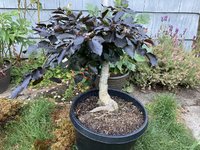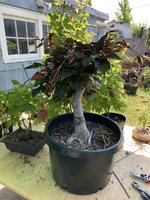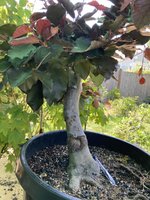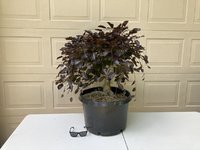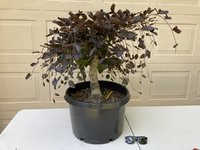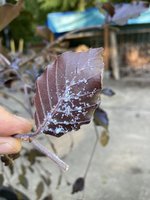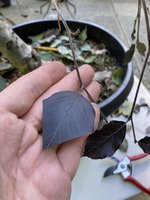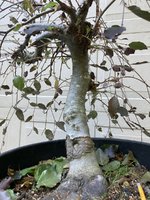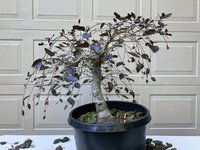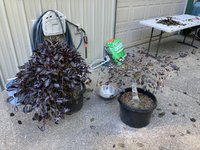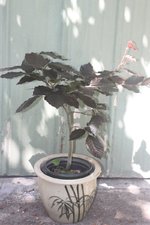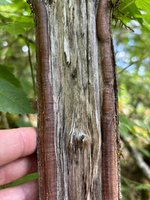I've got no answers for you, just more questions.
The nebari sucks, in my estimation. There are radical/risky approaches to this such as a layer low on the trunk, hoping to get roots all around. Then there are more conservative ones like nipping away at that really big and ugly one as well as a few others via several years of annual repotting. Do you like the nebari as it is? Maybe you think it is not so bad or you've got ideas of making it a feature = like a pug, so ugly it is cute (not that there is anything wrong with that, I love pugs).
There's an ugly scar about 1/3rd of the way up from the ground. Are you thinking this will be an uro and a feature of the bonsai composition? If so, you'll want the foliage to be low and positioned to 'frame' it, or to focus that viewer's attention on it. To make this happen you'll need some longer descending branches AND you'll want the nebari to be A+ since it won't be that far below the uro.
Alternatively, just pick a front so this uro-thingy isn't seen, which would seem to be something like your first photo. OMG, that nebari is literally butt-ugly and not something I would like to exhibit. The trunk also has nearly no movement and no taper at all in this view. Do you know if you can make buds pop lower on the trunk or whether you can grow branches long enough to make thread grafts down lower? Buds would be best, but thread grafting is also good. That thing just needs some lower branches!!! At roughly 50% (plus a little or minus some) the present trunk height you'd have the beginnings for a great broom or naturalistic tree of reasonable bonsai proportions, IMHO.

